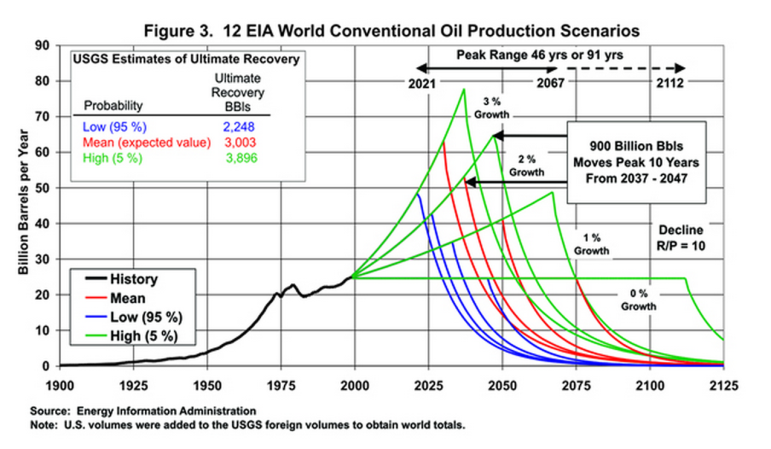Remember 2005? In the middle of a Bush presidency, Terri Schiavo and her feeding tube captured national attention, Lance Armstrong was still winning Tour de France titles, and Arianna Huffington launched a new website. Perhaps it was the shock of Hurricane Katrina, or the post-Y2K lull, but we needed of a new apocalyptic obsession and we found one in peak oil.
Public interest in peak oil – as judged by Google searches, at least – peaked in August 2005 and coincided with Hurricane Katrina.
In 2005, we were experiencing peak “peak oil.” Nearly ten years later, people keep asking: Whatever happened to peak oil? Is it still a thing?
What is peak oil, exactly?
Peak oil is the point when petroleum production reaches a maximum. After that point, production can only go in one direction: down. This event is, as a 2005 U.S. Department of Energy report put it, “an unprecedented risk management problem.”
We have a geologist named M. King Hubbert to thank for introducing us to the concept of peak oil in 1956. Throughout the decades, economic markets and geopolitics brought energy security in and out of the public psyche and peak oil along with it. Here’s a video of Hubbert from 1976, explaining peak oil with retro-tastic diagrams:
A key point to remember is that peak oil, as the term was first used, refers to peak production, not peak consumption, or peak discovery, or peak demand. Those things are all important, but they are different concepts.
The underlying logic behind Hubbert’s idea is simple (how it manifested itself in academic and popular discourse is not):
Oil is a finite resource. It comes from plants and animals that died millions of years ago. And even though plants and animals are dying and turning into oil at this very moment, we’re mining and using oil at a faster rate than we’re accruing it.
A single oil field tends to follow a curve of increasing, then decreasing, production. Hubbert assumed that the world’s oil supply is made up of oil fields, so the world’s oil production should follow a similar curve.
But global oil production has a lot more influences than a single well does. When oil interacts with people and markets and geopolitics and technology, things get messy. And that’s why Hubbert’s simplified curve doesn’t exactly match reality.
Did peak oil already happen?
Our friend M. King Hubbert thought peak oil would happen in the mid-1990s. That date came and went, and researchers have been revising peak oil predictions. A Department of Energy report cited peak oil predictions ranging from 2006 to 2025 to never.
To illustrate how tricky it is to predict peak oil production, here’s a U.S. Energy Information Administration graph from 2004 (pre-peak-peak-oil) outlining different scenarios:

Energy Information Administration
Future oil production scenarios from the Energy Information Administration, published in 2004.
Confusing, right?
It’s impossible to know you are at a peak when you are in the middle of it – it’s more like riding a bike through a rolling landscape than summiting a Colorado fourteener.

Jordan Wirfs-Brock
It’s impossible to tell you’re on a peak until you’re long past it.
Oil production has been increasing over the past twenty years, and globally in 2014 we are producing more oil than ever.
But that could mean we’re at a peak or it could mean we’re still growing. And some experts claim that even though overall production is at an all-time high, conventional oil (that is, the easy oil) peaked back in 2008.
Things changed, of course, when we figured out how to extract the not-so-easy oil like the kind in North Dakota’s Bakken formation.








